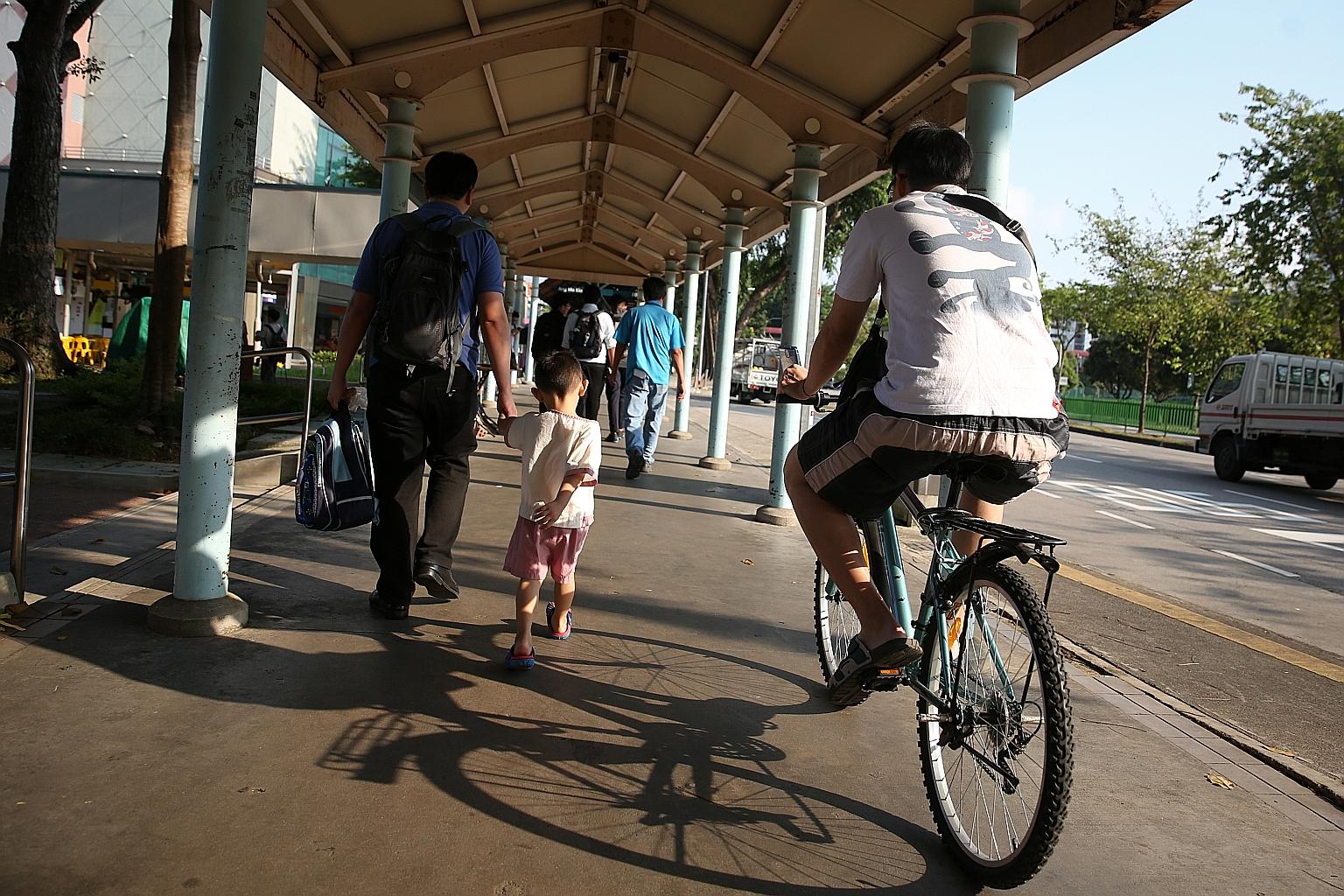Code of conduct puts pedestrians' safety first
Sign up now: Get ST's newsletters delivered to your inbox

The Active Mobility Advisory Panel has recommended that cyclists and users of personal mobility devices be allowed on footpaths, but the code of conduct it proposes also contains rules such as speed limits - 15kmh on footpaths and 25kmh on cycling and shared paths.
ST PHOTO: ONG WEE JIN
Follow topic:
Always give way to pedestrians; slow down and be prepared to stop when approaching bus stops or where there is a lot of people; and keep left unless overtaking.
The 21-point code of conduct for cyclists and users of personal mobility devices (PMDs) proposed by the Active Mobility Advisory Panel puts the safety of pedestrians front and centre, even as it recommended that these modes of transport be allowed on footpaths.
The panel said the code is a list of good etiquette or best practices that includes stopping to give assistance and exchange particulars after an accident, and dismounting in areas with many pedestrians.
It accompanies hard rules that include speed limits - 15kmh on footpaths and 25kmh on cycling and shared paths - and having front and rear lights when riding in the dark. The rules govern riders and PMD users of all ages.
The panel also suggested that cycling two abreast be allowed only on roads with two lanes or more in a single direction, except those with bus lanes during bus lane hours.
-
GENERAL RULES
•Ride in an orderly manner with regard for the safety of others.
Rules for on-road cycling
•Bicycles should be ridden as close as practicable to the left side of the road.
•Use hand signals to alert road users of your intentions.
CODES OF CONDUCT
•Stop to give assistance and exchange particulars when involved in an accident.
On the footpaths, cycling and shared paths
•Always give way to pedestrians. They have the right of way on pedestrian crossings.
•"Walk your bicycle" or dismount and push in areas with high pedestrian traffic.
•Stop and look out for traffic when approaching pedestrian crossings - cross only at walking speeds.
•Keep left unless overtaking.
On the roads
•Do not weave through traffic.
•Do not hold on to the back or side of vehicles.
The recommendations were submitted to the Transport Ministry yesterday, and are being studied.
Land Transport Authority chief executive Chew Men Leong said the new rules and code of conduct would help make cycling education efforts consistent. "Previously, we were not totally certain of the rules and code of conduct that would apply. This will form a baseline with which we can go out with our education effort and programmes."
Cyclists welcomed the recommendations and said these would make riding much safer.
Panel member Francis Chu, co-founder of Love Cycling SG, said many in the community were relieved as cycling on the footpath is now illegal in all towns except Tampines. But many cyclists still choose that over riding on the road as it is the safer option, he added.
"No one feels good breaking the law but, with the rules and code of conduct, they can be more assured and confident," he said.
But motorists and pedestrians may need more convincing. "There is no way to make sure cyclists abide by (speed limits)... What will happen to the old folk and children using the path? Who will be responsible if accidents occur?" asked housewife Wong Yoke Ching, 50.
Motorist Tomas Chew, 53, was concerned that the proposed rules might make danger spots like traffic junctions even harder to navigate. Mr Chew, a chef, said he regularly encounters cyclists who zip across pedestrian crossings without waiting, taking him by surprise.
"There are so many people on the roads now, so much traffic and so many types of traffic," he said.
Others asked if the code of conduct should be hardened into enforceable rules - such as requiring cyclists to stop in an accident.
Traffic Police Commander Sam Tee said the present recommendations were a "good start". "We don't want a society that is so constricted by rules and regulations," he said.
Game developer Kenny Chan, 33, who commutes to work by bicycle, said all users will need to learn to share the available space.
"I think we (cyclists) should not intimidate pedestrians to give way, but when we get to crowded places such as bus stops, it is also only polite to dismount and push," he said.
Danson Cheong
•Additional reporting by Rachel Chia

